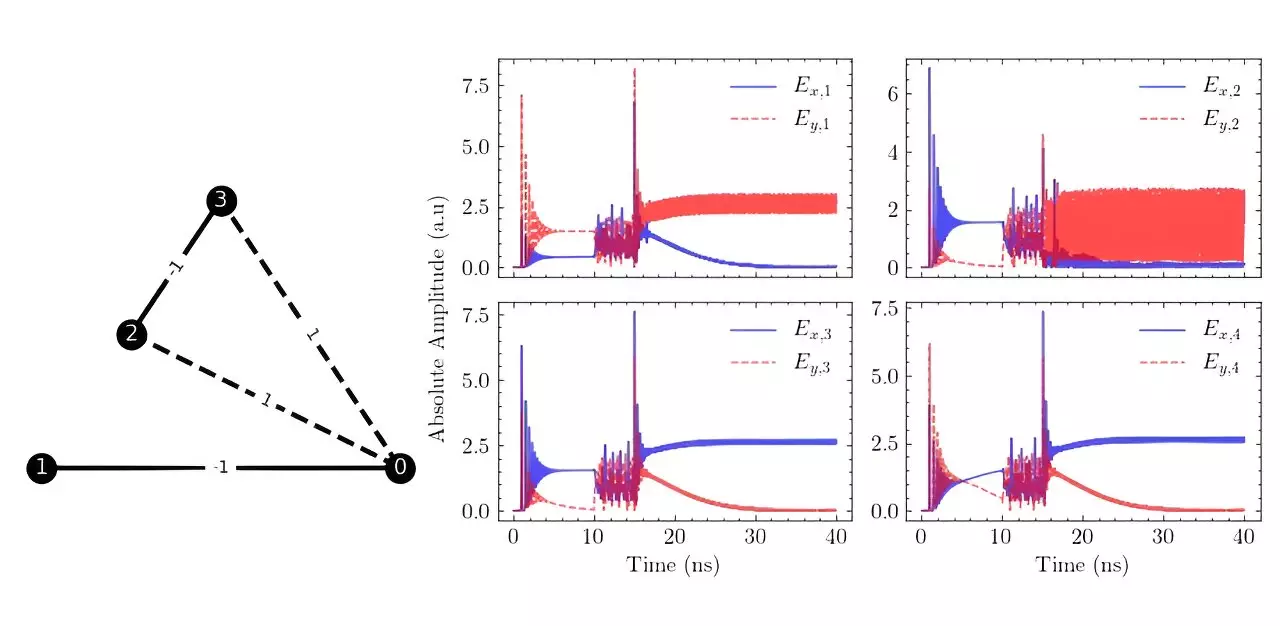In today’s world, solving complex problems efficiently is essential. Traditional computers often face difficulties when dealing with a large number of interacting variables, leading to inefficiencies like the von Neumann bottleneck. To overcome this challenge, a new type of computing known as collective state computing has emerged. This approach maps optimization problems onto something called the Ising problem in magnetism.
The Ising problem involves representing a problem as a graph, with nodes connected by edges. Each node has two states, +1 or -1, representing potential solutions. The goal is to find the configuration that minimizes the total energy of the system based on a concept called a Hamiltonian. Researchers are exploring physical systems that can outperform traditional computers in solving this complex problem efficiently.
One promising approach to solving Ising problems involves leveraging light-based techniques. Information is encoded into properties like polarization state, phase, or amplitude. By using systems that utilize light, such as vertical-cavity surface-emitting lasers (VCSELs), researchers can quickly find the correct solution through effects like interference and optical feedback.
In a recent study published in the Journal of Optical Microsystems, researchers from the National University of Singapore and the Agency for Science, Technology, and Research explored the use of VCSELs to solve Ising problems. These lasers are connected to each other, with interactions between them encoding the structure of the optimization problem. The researchers tested their system on 2-, 3-, and 4-bit Ising problems and discovered promising results.
However, the study also identified challenges that need to be addressed. For example, minimal VCSEL lasing anisotropy is required, which may be difficult to achieve in practice. Despite these obstacles, overcoming them could pave the way for the development of an all-optical VCSEL-based computer architecture capable of solving problems that are currently beyond the reach of traditional computers.


Leave a Reply